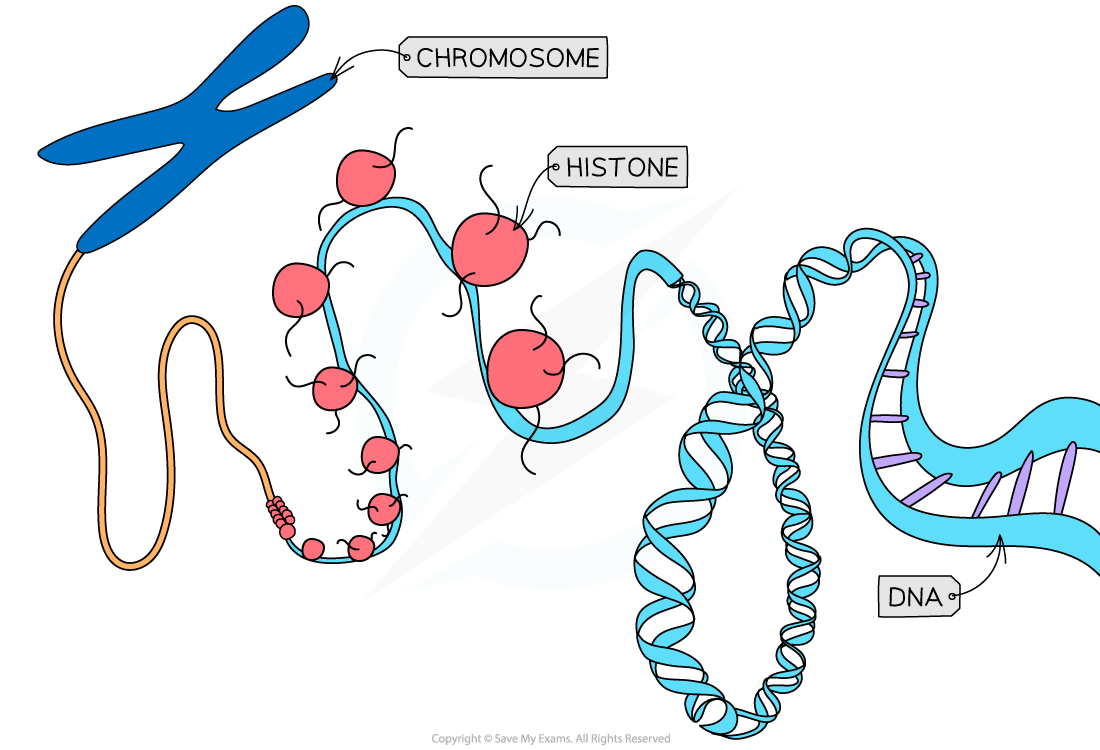- 翰林提供学术活动、国际课程、科研项目一站式留学背景提升服务!
- 400 888 0080
AQA A Level Biology复习笔记8.2.7 Epigenetics
Epigenetics

DNA is wrapped around histone proteins which form a nucleosome. Nucleosomes coil tightly around each other to form the chromosome structure.
- In eukaryotic cells, the DNA in the nucleus is wrapped around proteins called histones
- Histone proteins can be chemically modified through the addition of acetyl
- DNA can also be chemically modified through the addition of methyl groups without changing the base sequence which also leads to the regulation of gene expression
- All of the chemical modifications to all histone proteins and DNA (except base changes) in an organism is called the epigenome
- The epigenome, like the genome, is heritable but can undergo change
- Identical twins become more distinguishable with age because despite having exactly the same DNA, their epigenomes change independently, leading to differences
- Epigenetics involves heritable changes in gene function, without changes to the base sequence of DNA
- Changes to the epigenome are caused by changes in the environment
- Smoking, stress, exercise and diet can cause epigenetic changes
- Internal signalling from the body's own cells can also cause modifications to occur
- The chemical modification of histones and DNA controls how tightly the DNA is wound around them as the intermolecular bonding between the histones and DNA changes
- If the DNA is wound more tightly in a certain area, the genes on these section of DNA are 'switched off' as the gene and promoter regions are more hidden from transcription factors and RNA polymerase
- The modification of histones is reversible and therefore can be different in different cell types and can vary with age
- Epigenetic modification is independent, it occurs in different forms at different areas of DNA
- If histones are modified on a section of DNA that contains genes that control the colour of hair this does not mean that the histones around genes that control the cell cycle will be modified in the same way or at all
Acetylation of histones
- Acetyl groups (COCH3) can be added to lysine amino acids on histone proteins
- Lysine has a positively charged R group, this forms ionic bonds with the negatively charged phosphate backbone of DNA
- Adding acetyl (acetylation) to lysine residues removes the positive ion and therefore removes a bond between the histone protein and the DNA, this causes the DNA to be less tightly wrapped
- When the DNA is less tightly wrapped, RNA polymerase and transcription factors can more easily bind and therefore gene expression is stimulated
- Removal of acetyl (deacetylation) returns lysine to its positively charged state which has a stronger attraction to the DNA molecule and therefore inhibits transcription
Methylation of DNA
- Methyl groups (CH3) can be added to a carbon molecule on cytosine bases within sequences that contain multiple cytosine and guanine bases
- The addition of methyl groups (methylation) suppresses the transcription of the affected gene
- This happens because the methylated bases attract proteins that bind to the DNA and inhibit transcription
转载自savemyexams

在线登记
最新发布
© 2025. All Rights Reserved. 沪ICP备2023009024号-1








